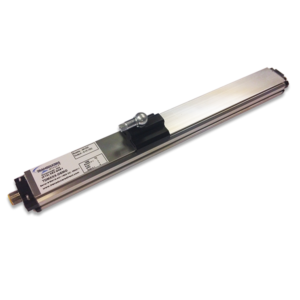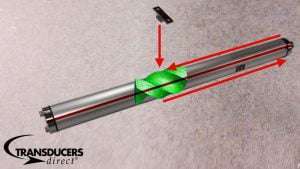Magnetostrictive (Non-Contact) Transducers Offer Longer Life, Better Accuracy
A magnetostrictive transducer is also called a non-contact linear transducer for precisely that reason: as opposed to a traditional linear transducer that measures resistance by a contact point, a non-contact linear transducer does the same thing by sensing a magnetic field.

Magnetostriction was first discovered in 1842 by James Joule – yes, that James Joule – and described the change in shape of ferric materials like iron in the presence of a magnetic field.
Today, Transducers Direct uses that technology in sensors. The magnetostrictive sensor is composed of an internal wave guide – about the size of a hypodermic needle –and a protective housing. Outside of the sensor is a position magnet. Inside the wave guide is a current wire that carries a current pulse down the length of the transducer. When the current pulse hits the magnetic field of the position magnet, it triggers a torsion twist — and sends a signal back to the pickup.
Imagine a guitar string: when you pluck the string it sends the vibration down to the pickup where the result is the note you hear.
Because we know the speed of the pulse around 2800m/sec, the time it takes to get to the magnet and back is all we need to determine position.

What Are the Benefits of Magnetostrictive Transducers?
The primary benefit of magnetostrictive transducers is that they have no contact parts, which results in longer life. They are also more accurate than traditional contact transducers, and better protected in applications that include water spray, wood chips, or other debris.
There is also a downside: magnetostrictive linear transducers have a higher initial cost, require 24 volts from a power source, and in extremely high-speed applications, can show a lag of a few milliseconds.
For more information or to discuss your application, please contact our technical support team. We’ll be glad to help you improve performance while lowering your costs.


Leave A Comment